Agricultural Erosion & Sediment Control/Conservation Planning
The goal of agricultural conservation planning is to identify and address natural resource concerns on agricultural land. These concerns include gully erosion, excess nutrients, and sediment runoff. Addressing resource concerns around your property benefits your soil’s health and productivity, as well as the water quality of local streams, creeks, and rivers.

Why Plan?
- Planning is always the first step in successfully completing any endeavor.
- This holds true for conservation efforts on agricultural operations.
- Planning is necessary to protect our natural resources.
- Having a plan in place helps ensure that valuable soil and nutrients are kept on your farm – rather than as runoff into nearby waters. The processes used by farmers to produce the food and fiber needed by our nation involve disturbing the earth to varying degrees depending on the type of tillage, planting techniques, and cultivation. The implementation of Best Management Practices (BMPs) are especially important to farmers since their use protects their soil resource and keeps waters clean.
- It is the law.
- According to the PA Clean Streams Law Chapter 102 revised in 2011:
- Written Agricultural Erosion & Sediment Control Plans (Ag E&S) are required for the following activities that disturb 5,000 square feet or more of land:
- All agricultural plowing and tilling activities (including no-till);
- Animal Heavy Use Areas (AHUA) – According to PA Chapter 102.1, an AHUA is a “Barnyard, feedlot, loafing area, exercise lot, or other similar area on an agricultural operation where due to the concentration of animals it is not possible to establish and maintain vegetative cover of a density capable of minimizing accelerated erosion and sedimentation by usual planting methods.”
- All farms that till or plow (including no-till) must make use of Best Management Practices (BMPs) to minimize erosion and sedimentation.
- Written Agricultural Erosion & Sediment Control Plans (Ag E&S) are required for the following activities that disturb 5,000 square feet or more of land:
- According to the PA Clean Streams Law Chapter 102 revised in 2011:
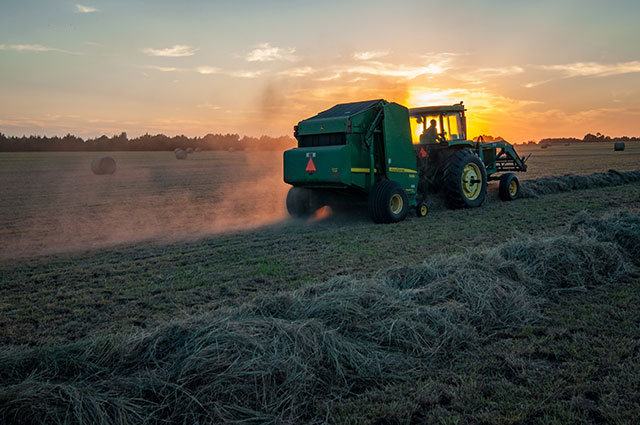
There are different types of conservation plans, click to find out more about the different plan types.
Types of Agricultural Conservation Plans
What are the basic principles for conservation planning?
An Ag E&S plan determines the potential for erosion on your fields based on your farming practices. This plan demonstrates that your soils can tolerate the amount of soil disturbance caused by farming or grazing. It also details how you’re addressing concentrated flow (gully) erosion with BMPs.
Developing an Ag E&S plan involves completing soil loss calculations which account for sheet & rill erosion. The RUSLE 2 soil erosion model is an equation that factors in the soil type, topography (steepness and length of slope), climate and land use management practices of a field to predict the soil’s erosion loss in tons per acre. It then compares this rate of erosion to the soil type’s natural tolerance “T” value. If current or proposed farming activities cause erosion at a rate higher than the soil’s “T” value, it’s necessary to develop a less-intensive management plan for that field. If the erosion rate is lower than the “T” value, the management is deemed acceptable.
Some soils are more erosive than others, and the steepness of a field affects its predisposition to erosion as well. Certain agricultural activities carry a higher risk for soil erosion than others: tillage, a rotation heavy on annual crops, and the removal of crop residue will all increase the risk of soil erosion on a field. Conversely, fields managed with reduced or no tillage, cover crops, heavy crop residues, and a rotation that intersperses perennial crops will have lower susceptibility to erosion.
The topography of the land determines where there is concentrated flow of water. It is likely that gullies will develop in these areas. The higher volume and faster flow of water in these areas will transport sediment downstream. A conservation plan needs to address these areas with Best Management Practices (BMPs). Commonly used BMPs include grassed waterways and diversions.
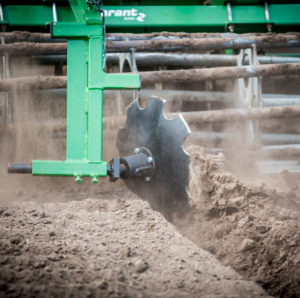
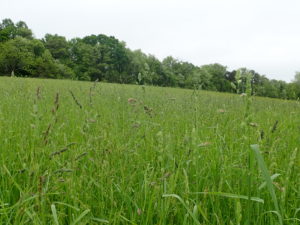
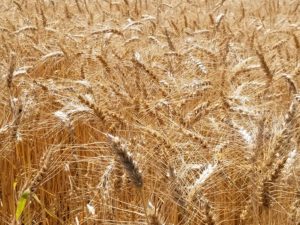
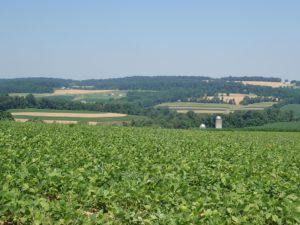
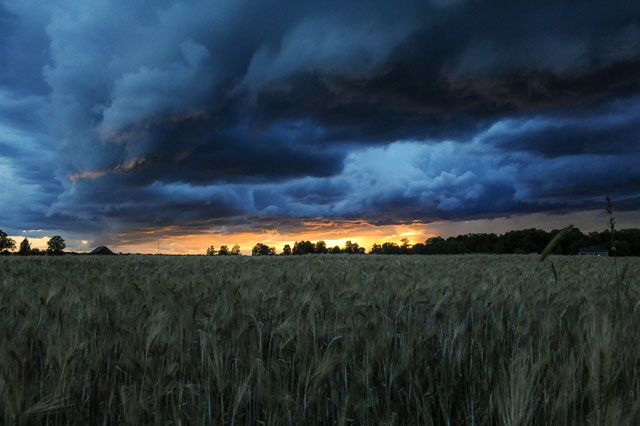
When should I update my Ag E&S or Conservation Plan?
You should update your Ag E&S plan if your farm or fields have:
- Added land to the operation.
- A higher frequency of tillage events since the previous plan was written: discing more frequently during the crop rotation, or switching to a more aggressive method of tillage.
- A lower frequency of perennial crops in your rotation: such as fewer consecutive years of hay in a rotation.
- A higher frequency of annual crops in your rotation: such as increasing the years of corn grain in a rotation or adding a year of soybeans to an existing rotation.
- A higher frequency of low-residue crops in your rotation: such as planting more soybeans, corn silage, or if you begin to harvest corn grain residue for bedding.
- Merged fields in a way that increases the length of a field along a slope.
- Reduced the frequency of cover crops or other overwintering crops in your rotation.
- Operation has an Animal Concentration Area (ACA) not referenced in the current plan.
- Added a BMP to a field to address erosion.
If an operation has made any of the above changes since the last time a plan was written for their farm, they should update their plan. If they are considering making any of the above changes, they should verify that the field(s) can tolerate that change.
Is there any funding assistance available to develop an Ag E&S or Conservation plan?
- Resource Enhancement and Protection Program (REAP). This program provides tax credits for farmers to have plans developed or install BMPs. More information on this program can be found at here.
Helpful Links
Agricultural Erosion & Sediment Control Plan
What is an Ag E&S Plan?
An Ag E&S Plan is a written site specific record of the farm operator and/or landowner’s decisions as to how they presently or will reduce erosion from cropland and animal heavy use areas (AHUA). An Ag E&S Plan is the minimum level of plan required for agricultural operations in Pennsylvania. The Ag E&S plan should be available at the farm at all times to guide the persons responsible for overall farm operations and if requested during an inspection. While very similar to Conservation Plans, they are not as complex as Conservation Plans which are required for participating in federal programs.
What are the Ag E&S Plan Requirements?
- Plan must meet the Tolerable Soil Loss “T” over the entire crop rotation for that particular soil type.
- Near Stream Areas: Areas within 100′ of a river, or perennial or intermittent stream, need to maintain 25% cover at all times (or implement a BMP such as a permanent 35 Foot vegetative buffer).
- Animal Heavy Use Areas (AHUA): The plan must identify BMP’s to minimize accelerated erosion, nutrient runoff and sedimentation. AHUA include: barnyards, exercise lots, manure handling areas, sacrifice areas, feed areas, shade areas, etc.
- Plan Maps that show the location of water, drainage patterns (topography), field and property boundaries, buildings, AHUA, roads, and BMP’s. (Maps can be developed using the PA One Stop website
- A soils map of the operation.
- A narrative of BMP’s including AHUA practices and procedures, tillage systems and crop rotations.
- An implementation schedule for planned BMPs.
- View the Soil Erosion and Sediment Control Manual for further explanation of the requirements
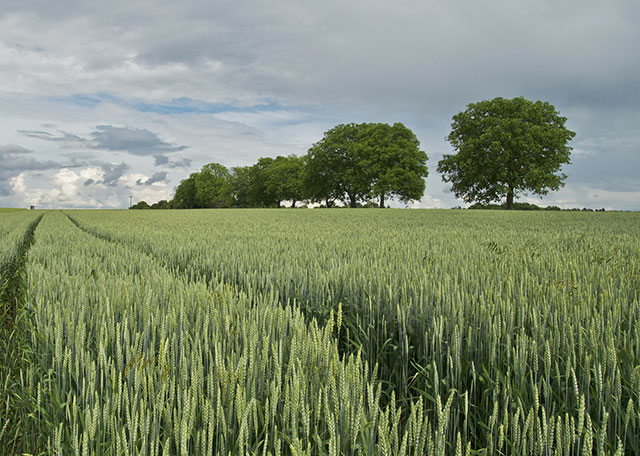
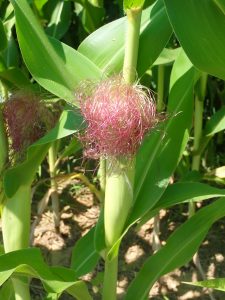
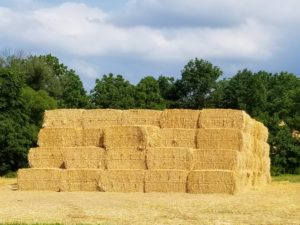

How do I complete an Ag E&S Plan?
Ag E&S Plans can be written by the operator or a professional.
- Operators can use PAOneStop, a free, online tool. This program allows anyone to develop the map and soil loss components of a plan for their current field activities, as well as to predict the effect of a change in field boundaries or cropping practice–before the change is made.
- Our York County Conservation District Ag Staff can work cooperatively with an operator to write an Ag E&S Plan for the farming operation. The operator needs to submit a Cooperator Request Form to be added to our planning waiting list.
- Private consultants can be hired to write an Ag E&S Plan. A list of these planners can be found on the USDA-NRCS website
Conservation Plans
What is a Conservation Plan?
A Conservation Plan is a record of the farm operator and/or landowner’s decisions as to how all natural resource concerns should be addressed. In some cases, it may also include a strategy to improve air quality, animal health, energy efficiency, wildlife habitat, or control invasive plant species. In addition to addressing resource concerns, it also considers potential cultural resources on the farm and assesses the impacts of farm operations on the environment.
A Conservation Plan that has been written by USDA-NRCS will meet most of the requirements of the Ag E&S Plan. However, older NRCS plans may not address the Near Stream Areas or AHUA criteria. A Landowner can request NRCS to write or update a Conservation Plan to meet the Ag E&S (or 102) requirements. Contact the NRCS office to make this request.
Additionally, a current Conservation Plan is required to participate in many federally funded programs such as Environmental Quality Incentive Program (EQIP). The Conservation Plan should be available at the farm at all times to guide the persons responsible for overall farm operations. Conservation Plans are written by trained professionals such as District staff, NRCS staff, or private consultants.
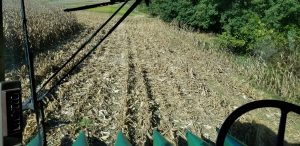
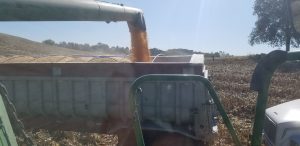


What is included in a Conservation Plan?
- Summary of the decisions made by the farmer to address natural resource concerns. This is accomplished through the use of Best Management Practices (BMPs).
- Soil loss calculations and documentation including but not limited to RUSLE2.
- Maps that show location features including:
- Buildings and farm structures
- Planned and implemented BMPs
- Roads, Streams, Ponds, other water features
- Soil, aerial, and topographic maps
- BMP implementation schedule
- Pasture management
- Pennsylvania Natural Diversity Inventory
- Environmental Evaluation
- Wildlife Habitat Evaluation
- Cultural Resources Evaluation
- Priority Resources Inventory map
How do I complete a Conservation Plan?
Conservation plans must be written by a professional.
- USDA –NRCS staff or our York County Conservation District Ag Staff can work cooperatively with an operator to write a Conservation Plan for the farming operation. The operator needs to submit a Cooperator Request Form to be added to our planning request list.
- Private consultants can be hired to write a Conservation Plan. A list of these planners can be found on the USDA-NRCS website.
Ag Construction E&S Plans & Permits
Construction on Farms and Permitting
Construction activities on farms require a written Erosion and Sedimentation Control Plan when disturbing more than 5,000 square feet, as with any other type of construction (residential, commercial, industrial, etc.). NPDES Permits are required for planned disturbances of over 1 acre when building structures such as barns, manure storages, houses, silos, bunk silos, etc. Permits are to be issued prior to commencement of earthmoving. Normal plowing and tilling and the installation of BMP’s such as waterways, barnyard improvements and animal walkways may not need an NPDES Permit or construction E&S plan as long as those activities are included and addressed in the farms Ag E&S Plan. As with any construction, activities in or around streams and wetlands may require additional approvals. Also, local municipalities may also have requirements.

